Error message
- Deprecated function: Methods with the same name as their class will not be constructors in a future version of PHP; ReCaptcha has a deprecated constructor in require_once() (line 341 of /home/slsser5/public_html/slsdev2/includes/module.inc).
- Deprecated function: The each() function is deprecated. This message will be suppressed on further calls in _menu_load_objects() (line 579 of /home/slsser5/public_html/slsdev2/includes/menu.inc).
For a While in Peru… Kent’s Short Sightseeing and Architectural Tour
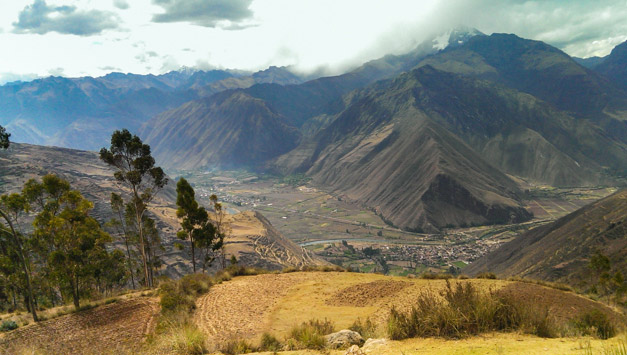
By Kent Brubaker, Web and Interactive Developer at Street Level Studio
All photos credited to Kent Brubaker, Michelle Mason, and Lourdes Masis
Since I have lived in the extremely flat, abundantly corn-filled environment of Illinois my entire life, visiting Peru with my wife and friends was truly astounding. In our trip from Lima to Cusco, through the Sacred Valley, and on to Machu Picchu, we were allowed to spend time seeing wonders we had never seen before. For a short time, we stepped into another world.
Starting in Lima
What we saw: Lima Historic Centre, Iglesia de San Francisco
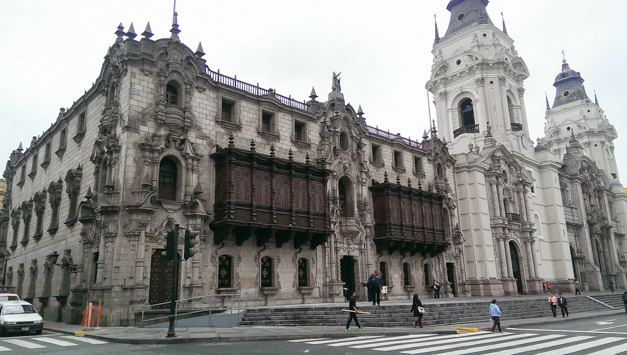
Basilica Cathedral of Lima. Finished in 1540, its walls could not withstand Lima’s powerful earthquakes. It was rebuilt time and again with each era lending a different architectural flare.
Though we were part of a tour group, our plan was to see the things we had never seen before. Lima was where we began.
Most of our tour of Lima was in its Historic Centre. Founded in 1535 by the Spanish conquistador Francisco Pizzaro, the Historic Centre was the foundation of the newly established Spanish government in Peru. While most of the buildings bear the mark of the Spanish Colonials, what you notice most in the architecture is the odd mixture of styles.
Sitting at the edge of the Nazca and South American tectonic plates, Peru is host to some very powerful earthquakes while the ongoing shifting of the earth’s crust gives rise to the Andes. As a result, every building has pieces of their structures that have collapsed and were rebuilt in different eras. They look as if hastily glued together—Baroque mixed with Neoclassicism mixed with Art Nouveau. The walls crumbled over and over only for them to be reborn in a more contemporary style.

Iglesia de San Francisco. Taking over a hundred years to complete, the church has been largely earthquake-proof and has kept its contents safe since 1774. It holds a rather large collection of Peruvian artwork from the likes of Francisco de Zurbarán and Diego de la Puente.
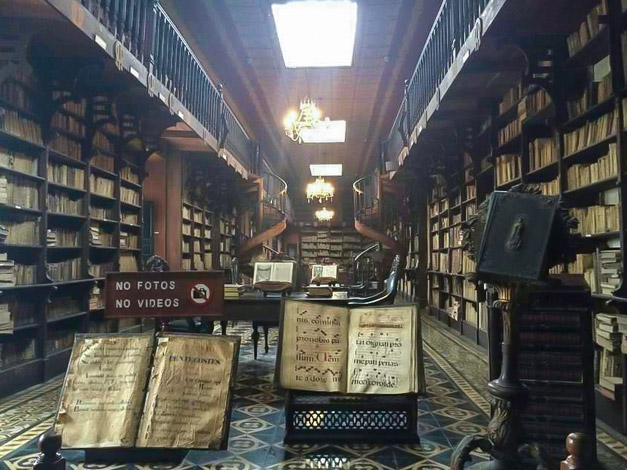
Iglesia de San Francisco - Library. Ahem, no photos please. This is one of the oldest libraries in South America with over 25,000 antique texts including the famous Bible Regia, published in Antwerp, Belgium, between 1571-1572.

Iglesia de San Francisco - Catacombs. Before the city cemetery opened outside Lima in 1808, a series of underground tunnels and arches with pits beneath the church served as the burial ground for the departed. There are no grave markings. Once the bodies decomposed, the remaining bones were “artfully” arranged within their pits.
Moray, the Urubamba Valley, and Cusco
What we saw: Moray Ruins, The Sacred Valley of the Incas, Temple Hill in Ollantaytambo, Qurikancha
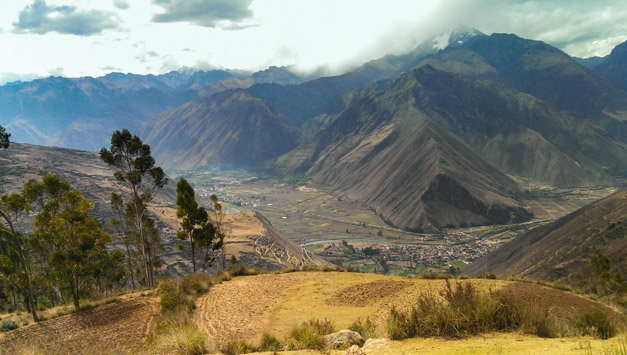
The Sacred Valley of the Incas extends along the Urubamba River and hosts a number of Incan ruins. This was one of the most important areas for the well-being of the Inca Empire.
Next, we boarded a plane in Lima right next to the Pacific Ocean and landed two miles above sea level. From the airport, we ditched our main tour group for a private tour to Moray and the Urubamba Valley.
The scene is one of unique natural majesty. Stunning mountain landscapes with red mud brick buildings spread everywhere, and agricultural farming terraces layer every hill. This is the Urubamba Valley, known as the Sacred Valley of the Incas. It extends all along the Urubamba River and hosts a number of Incan historic sites including the Moray Ruins and the Temple Hill in Ollantaytambo. Its fertile soil and warm climate proved perfect for maize production and was a natural source of their wealth.
In Cusco, there is an odd mixture of Incan and Christian influence seen throughout the city. From the 13th to the 16th centuries, Cusco was the capital of the Inca Empire until the Spanish colonization in the 1500s. After many battles, the Spanish eventually defeated the Inca, destroying the Incan structures and building their own on the Incan foundations.
I asked our tour guide specifically about this mix of Christianity and Inca heritage, wondering how these two disparate cultures could mesh together. His response was a perfect reflection of the culture. “Yes, we celebrate Christmas and Easter and attend mass on Sundays. The rest of the week we are all pagans at heart.”
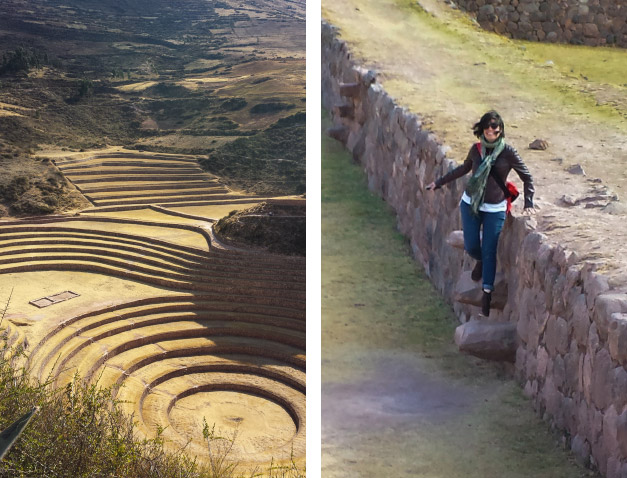
Peru is home to over 4,000 varieties of potatoes! Moray is believed to be an Inca agricultural station meant for experimentation with potatoes and other vegetables for consumption. Since the temperature from top to bottom varies by 27˚, it provided a great place to study how various plant species developed in different climates.
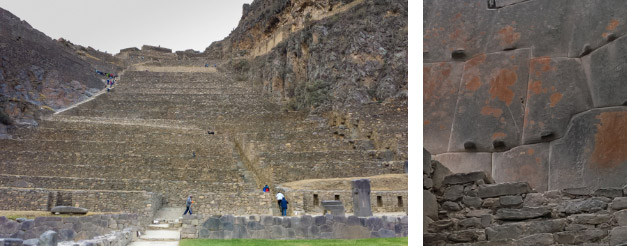
Ollantaytambo Ruins. Large irregular boulders of the terraced Temple Hill were stacked and sanded to form interlinking blocks that provided protection from seismic activity.
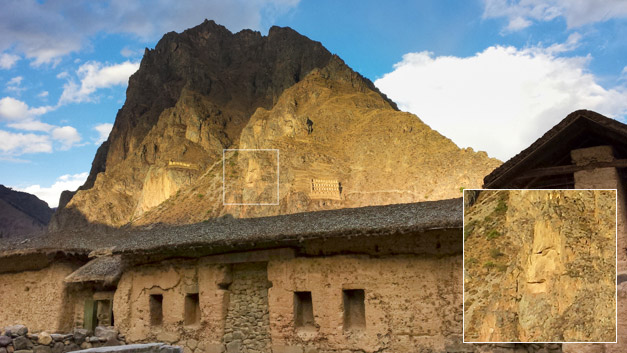
Ollantaytambo Ruins. From the bottom of the ruins you can observe a carving of the sun god the Inca worshipped in the mountain across the valley.
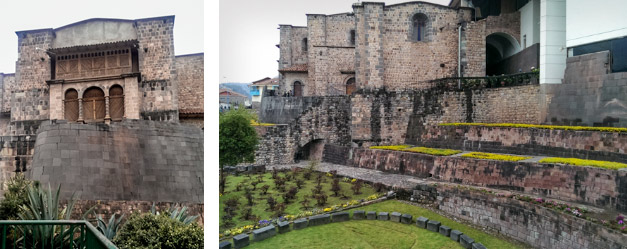
Church of Santo Domingo and Qurikancha. In Cusco, the temple Qurikancha was destroyed and the church was built directly on top. Once again, the Incan structure of interlocking stones has largely remained intact while the church has needed to be rebuilt.
On a Ridge in the Andes
What we saw: Machu Picchu
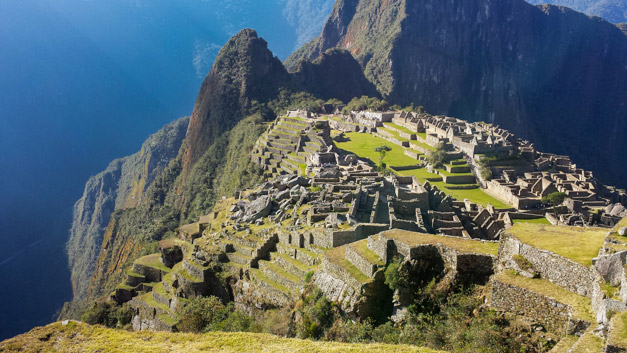
As only 60% of Machu Picchu is believed to be uncovered from forest overgrowth, the size of the estate occupies over five square miles. From the House of the Guardians, a watchtower over the city, one can see the eastern portion which held residences of both nobles and commoners, as well as buildings dedicated to industry and worship.
Machu Picchu is the perfect example of another world. To get there we spent an hour and a half on a rickety train traveling through the Andes to the edge of the Amazon rain forest. We then boarded a bus that climbed the steep mountainside on an all-too-narrow road, zig-zagging its way to the top. As we went higher, the trees began to thin. The breadth of the natural world was all around, mountainous and lush. The city stood on top.
Machu Picchu stands on a ridge between two mountains above the Sacred Valley. Built around 1450 at the height of the Inca Empire, it is believed to be an estate for the Incan emperor Pachacuti. Structural terraces flow up one side of the mountain ridge and down the other. A vast central square separates residences for nobility and commoners, and several structures stand in deification to Inti, their sun god.
From atop the terraces, you can see how the city takes the shape of its mountainous terrain, the depth of the valleys and the looming peaks multiplying the grandeur. Looking around, you cannot imagine how anyone envisioned building a city here.
What’s baffling is that this marvel of ancient civilization was abandoned after only a hundred years. Though the Spanish had conquered the Inca, it is clear they did not find Machu Picchu. As in Cusco, the Spanish conquistadors destroyed most cultural remnants of the civilizations it conquered, erecting churches and artifacts of its own culture to establish its conquest. When discovered in 1911, however, Machu Picchu was found preserved, mostly covered in vegetation and untouched by the colonials. Its ruin was marked only by time.
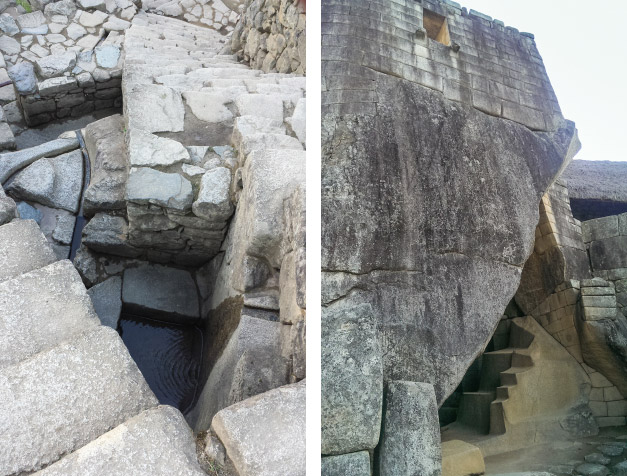
Interiors of Machu Picchu. (Left) Capturing rainwater was necessary for living here. Wells were formed using an advanced trench system to capture water from mountain springs. (Right) Torreón, or Temple of the Sun, served as a place of worship and an observatory for the winter. Within these walls lies an altar where it is believed that sacrifices were made to the sun god.
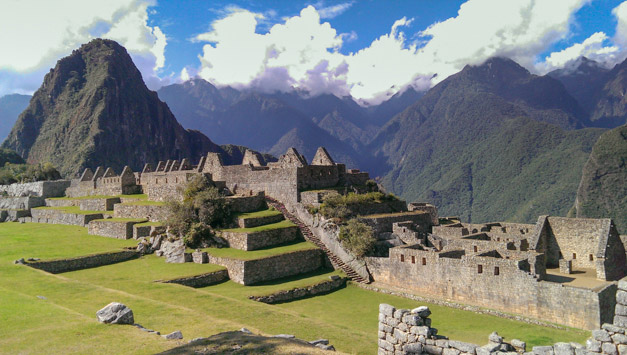
Machu Picchu. The estate is believed to have contained a small industrial section where weavings and pottery were manufactured. The wide grass terrace on the left (also seen in the photo from the House of the Guardians) is where goods were traded and sold in the marketplace.
Back Home
After returning home and after the show-and-tell of pictures and stories, I was asked whether I would go back. I initially hesitated thinking there are so many other parts of the world I have yet to see. The answer, though, is a definitive “Yes!” Looking back, I might make changes, try to incorporate things we didn’t get to see (the Nazca Lines, Lakes Titicaca), but in the end, the idea is that this unique place on earth, this other world so very different from my own, is worth all the appreciation we can give it.


Add new comment